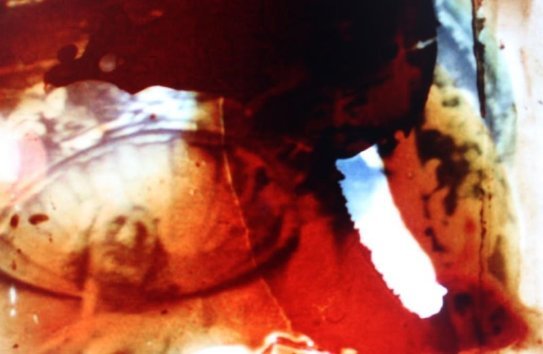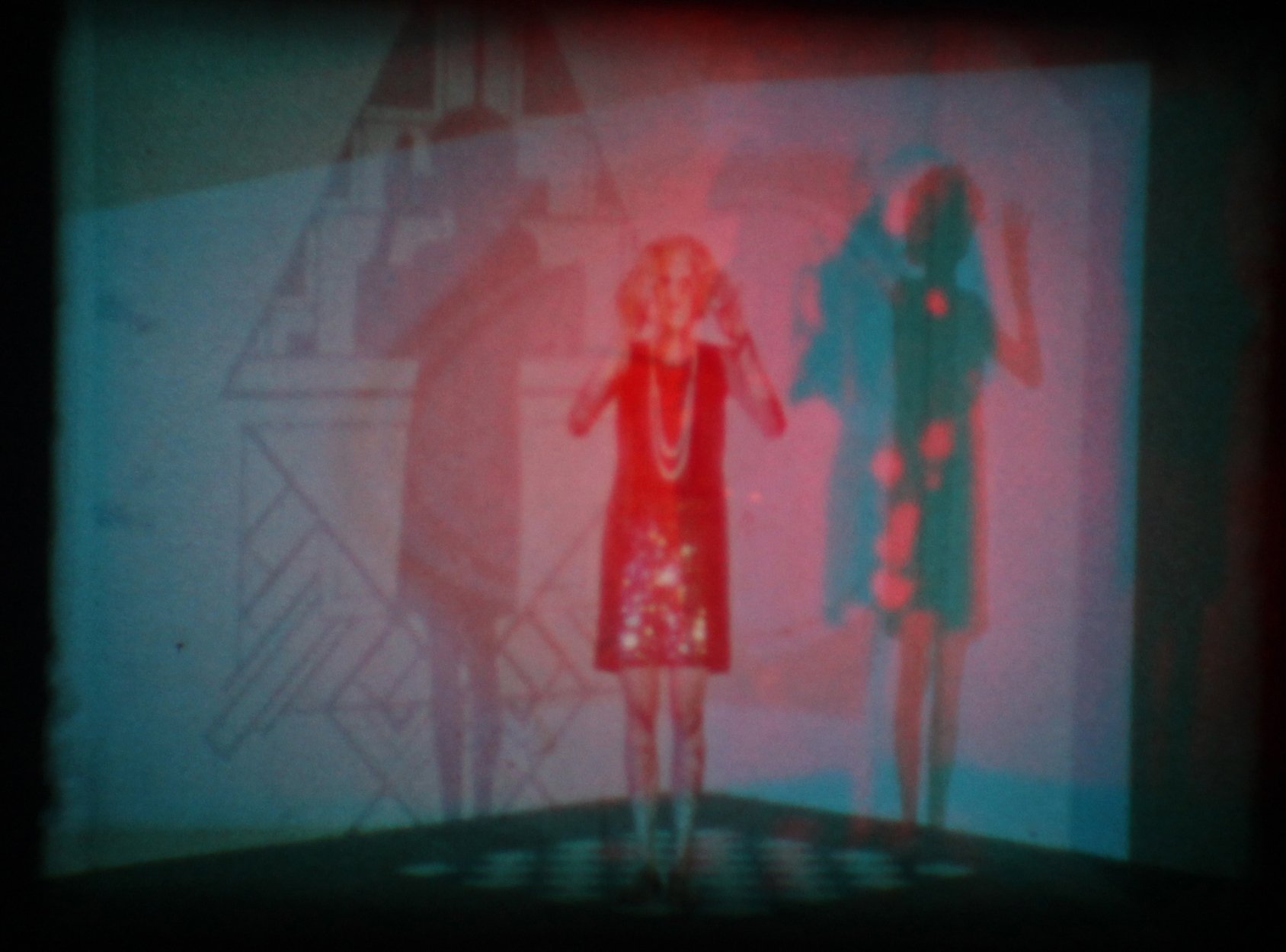Film
The Singular Beauty of a Glorious Death (2015)
Super 8 transferred to digital video, colour, sound, 6min 55sec"Christopher Hall examines the interplay between memory, ritual and notions of power. Celebrating the materiality of physical film, he creates montage-like collages, pushing images through chemical processes to generate images that cannot be achieved digitally. Recurring images of ceremonies, marching bands and military parades take on new meaning, posing questions around how we remember, how we memorialise and what, in our digital world, will survive."Composition (2014)
Super 8mm transferred to digital video, colour, sound, 6minFirst shown as part of the Northern Artist’s Film Programme, Quays Culture at Media City in 2014. Portions of the original super 8mm film have been subjected to natural decomposition, re-filmed and double-projected with found footage. The film has since been shown in different configurations, most recently set to an untitled poem written and read by the poet Ian Harker.The Waste Land - Expanded Cinema (2010)
(Multiple projection, colour, sound, 60min)First performed as part of Cinema Povera, a weekend of experimental cinema in association with OKO and Art in Unusual Spaces. The Waste Land was the culmination of two years’ work and a collaboration between artist filmmaker Chris Hall and poet and writer Ian Harker. It was conceived as a politically charged ‘expanded cinema’ performance that incorporated a live reading of T.S. Eliot’s poem with simultaneous multiple projections, 35mm slides, effects and sustained musical pieces.Reflections on the Brave New World (Split-screen version) (2010)
(16mm found footage, hand manipulated super 8mm film transferred to DV, collaged audio & live intervention, 10min)In 1962 shortly before his death, Aldous Huxley author of Brave New World addressed an audience at Berkeley CA with a speech entitled ‘The Ultimate Revolution’.He reflected on the advances made since the publication of his prophetic novel in 1932 and contemplated the nature of control in advanced democratic societies, where technology plays an increasingly centralised role in the regulation of body and mind.‘If you can get people to consent to the state of affairs in which they’re living…the state of servitude the state of being, having their differences ironed out, and being made amenable to mass production methods on the social level, if you can do this, then you have, you are likely, to have a much more stable and lasting society. Much more easily controllable society than you would if you were relying wholly on clubs and firing squads and concentration camps.’ Reflections on the Brave New World is a response to a recording of the Huxley speech and was performed live as part of EXP24′s night for Leeds International Film Festival in 2008. The work consisted of a prepared film loop edited to a soundtrack using found footage and hand processed Super 8 film. This was synchronised alongside an educational 16mm film featuring an earthworm in preparation for dissection. Confrontational with the interplay between the two images side by side on screen, the piece is suggestive with both the specimen of the earthworm and the face of the woman undergoing external manipulation. Portions of the original voice recording could be heard along with live audio interference and selected readings from Herbert Marcuse’s One Dimensional Man.Trial By Air (2012)
Super 8mm transferred to digital video, colour, sound, 10min 45secThird part of in a conceptual film cycle inspired by Terrasson’s Sethos and the monumental architectural designs of Étienne-Louis Boullée. Trial By Fire (2008)
Super 8mm transferred to digital video, colour, sound, 10min 45secThe meditative first part in a conceptual cycle intended to be projected over three walls. The film is shot on Kodachrome Super 8 film and re-filmed as a composite image.TARGET:MARKET (2007)
Super 8mm transferred to digital video, colour, sound, 12minThe film was shot clandestinely after a number of unsuccessful attempts in a busy urban shopping centre. Shot on Kodachrome 40 at 54 frames per second, the film is an exercise in paranoia. It attempts to draw parallels between the methods of mass persuasion employed by advertisers and the entertainment industry and the politics of fear employed by governments and terrorists alike. Heavily influenced by William S. Burrough’s ‘The Electronic Revolution’ it has been shown as both a conventional film and as an immersive sound installation using multiple audio sources from carefully placed tape recorders.































